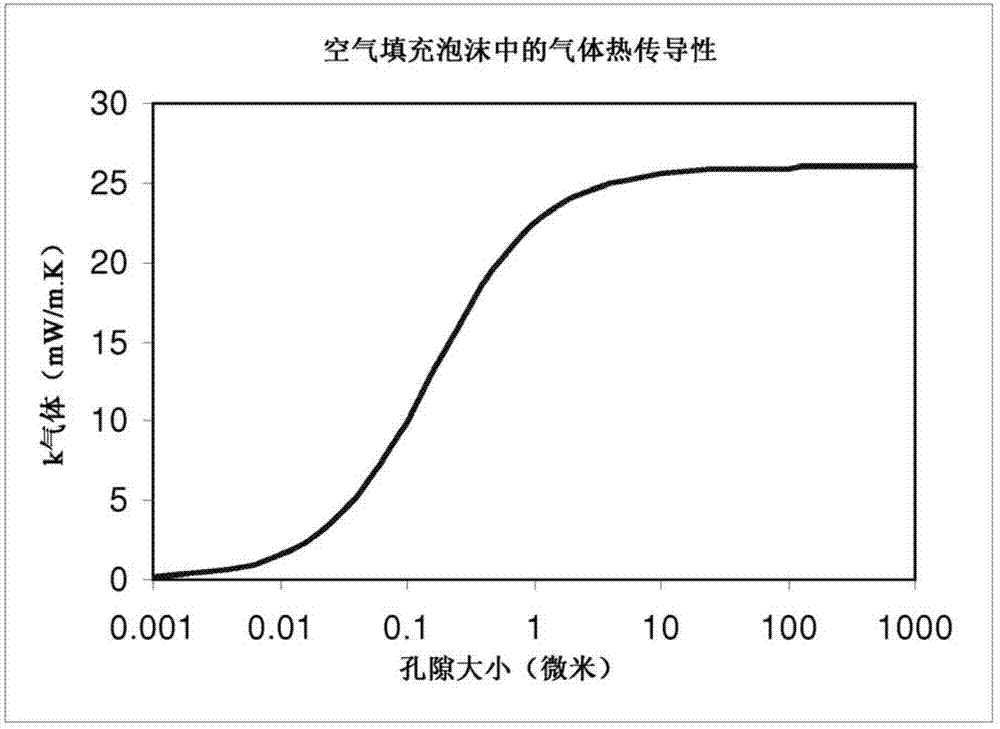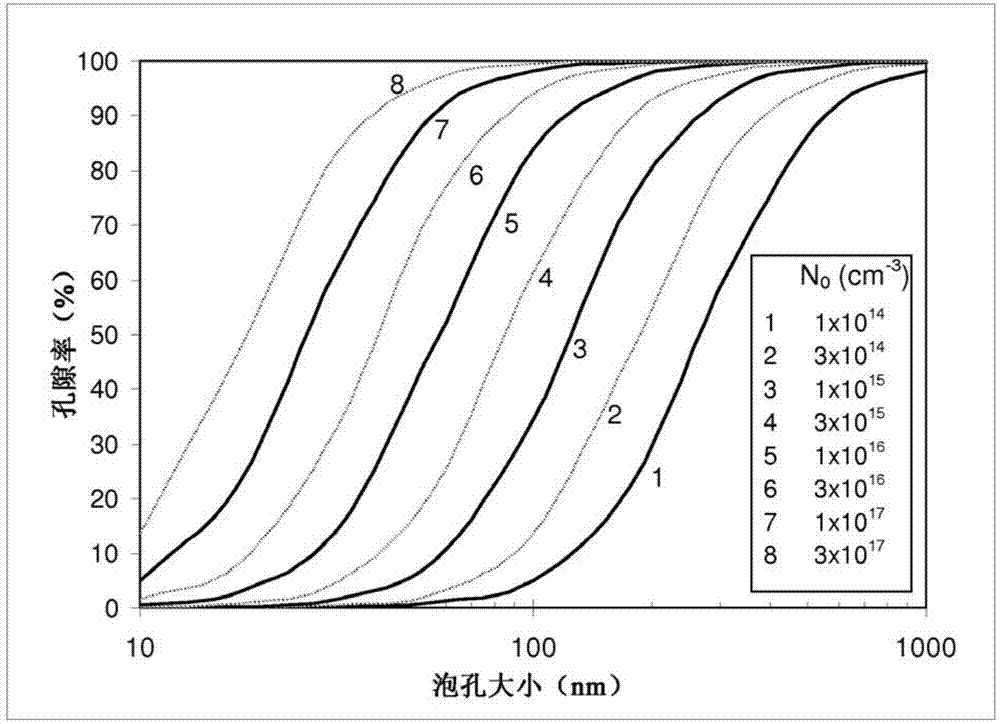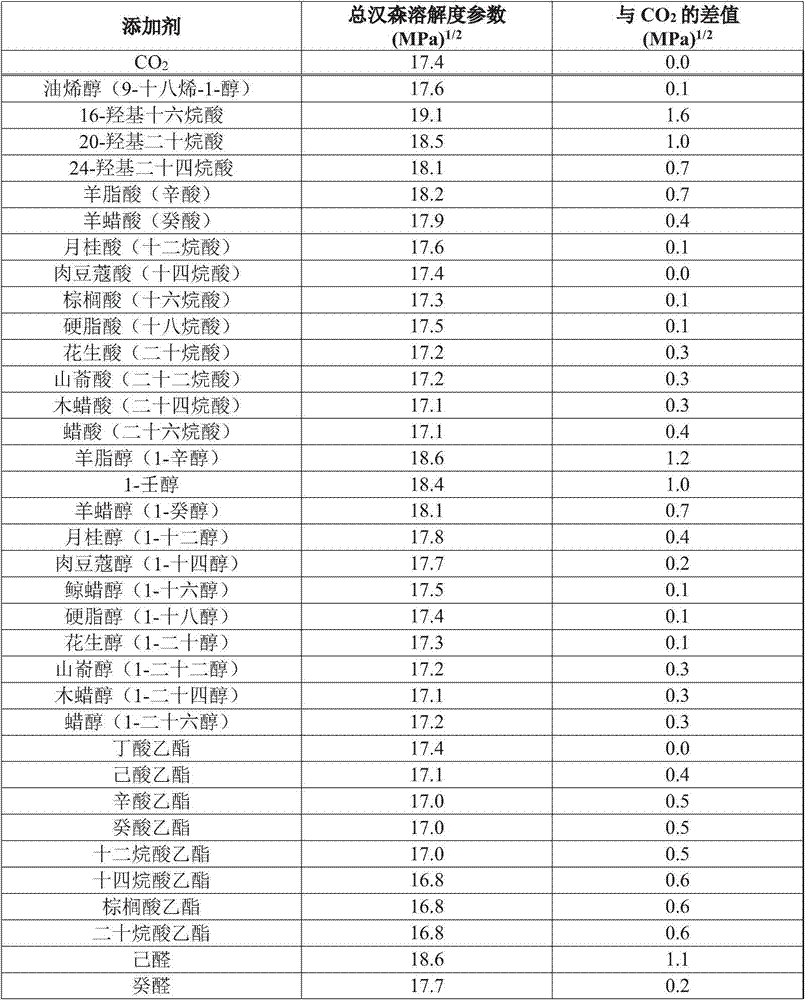Nanocellular thermoplastic foam and process for making the same
A thermoplastic polymer and foam technology, applied in the field of manufacturing the foam, can solve the problems that large foam samples have no practical significance and extreme engineering requirements, and achieve the effect of small cell size and high nucleation density
- Summary
- Abstract
- Description
- Claims
- Application Information
AI Technical Summary
Problems solved by technology
Method used
Image
Examples
example
[0084] The following examples use polymers selected from Table 1 or Table 2 as thermoplastic polymers. Table 1 lists three different polymethylmethacrylate-co-ethylmethacrylate (PMMA-co-EMA) copolymers obtained from Scientific Polymer Products. Table 2 lists the SAN copolymer (TYRIL TM 125, TYRIL is a trademark of The Dow Chemical Company).
[0085] Table 1
[0086]
[0087] Table 2
[0088]
[0089] The compositions of Comparative Examples (Comp Ex) and Examples (Ex), and the characteristics of the resulting thermoplastic polymer foams are provided below. Each Comparative Example and Example followed similar mixing and foaming procedures.
[0090] POSS masterbatch
[0091] A masterbatch of polyhedral silsesquioxane (POSS) suitable for use in the following selected examples was prepared as follows. POSS (Catalogue # MA0735) was obtained from Hybrid Plastics Inc. One gram of POSS was dissolved in four grams of ethanol, and the resulting solution was added to 49 gr...
PUM
| Property | Measurement | Unit |
|---|---|---|
| Thickness | aaaaa | aaaaa |
Abstract
Description
Claims
Application Information
 Login to View More
Login to View More - R&D
- Intellectual Property
- Life Sciences
- Materials
- Tech Scout
- Unparalleled Data Quality
- Higher Quality Content
- 60% Fewer Hallucinations
Browse by: Latest US Patents, China's latest patents, Technical Efficacy Thesaurus, Application Domain, Technology Topic, Popular Technical Reports.
© 2025 PatSnap. All rights reserved.Legal|Privacy policy|Modern Slavery Act Transparency Statement|Sitemap|About US| Contact US: help@patsnap.com



